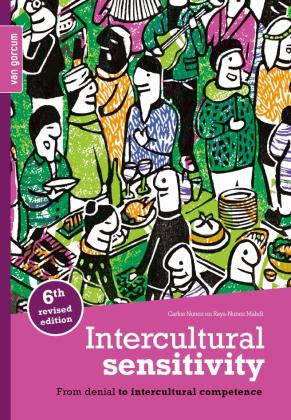

Intercultural Sensitivity
From Denial to Intercultural Competence
Studentenkorting
Beschrijving
With migration, labor mobility, and student mobility, our societies are more culturally diverse than ever before. Through internationalization, millions of students spend their internships and part of their studies abroad every year. While lecturer mobility programs bring international lecturers straight into local classrooms.
What is the impact of diversity at the workplace, and in classrooms?
Research shows that performance in culturally diverse groups is outstanding. They out-perform single cultural groups. They have broader perspectives, more ideas, more and better solutions to problems, and greater creativity.
However, productivity in diverse groups can be low when differences are regarded as a problem and are suppressed. When those who are different are excluded. Culturally diverse groups excel when all members feel included, have a sense of belonging; and when their diversity is recognized as valuable sources of innovation and growth. In society. In companies. And in education.
Intercultural Sensitivity presents the cultural models by Hoffman, Hall, Kluckhohn, Hofstede, Trompenaars, Bennett, House, Banaji and Greenwald as practical competencies to achieve inclusion. It gives students a head-start in working with lecturers and fellow student of other cultures. Readers become aware of the uniqueness of their own cultures, which they may take for granted. It helps students recognize culture as a valuable resource, and to excel in their future international careers.
What’s new in this 6th edition?
Diversity, Equity and Inclusion, are new highlights of chapter 1. What do we gain from creating inclusion at work and in the classroom? It explores new cases and culture shock from a migration perspective. The 6th edition includes a practical index of new terminology.
Compact, and easy to study in a 7- or 8-week term, this book is packed with assignments and cases from real life intercultural situations – any place where you need to communicate across cultures. In class, on internship, or in the professional field, Intercultural Sensitivity will help students and professionals achieve intercultural competence.
About the authors
From highly diverse cultural and professional backgrounds, the authors are trainers and lecturers at universities and universities of applied sciences. They work as independent intercultural trainers, coaches and consultants.